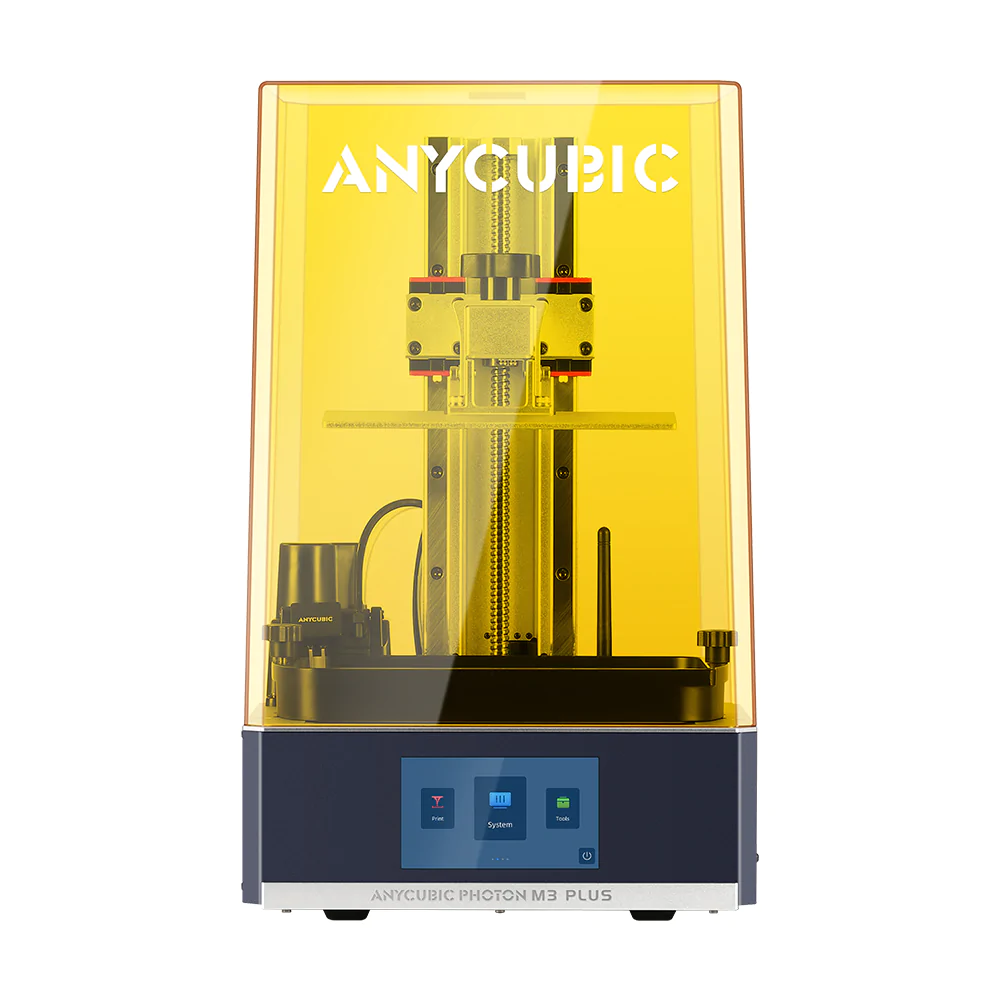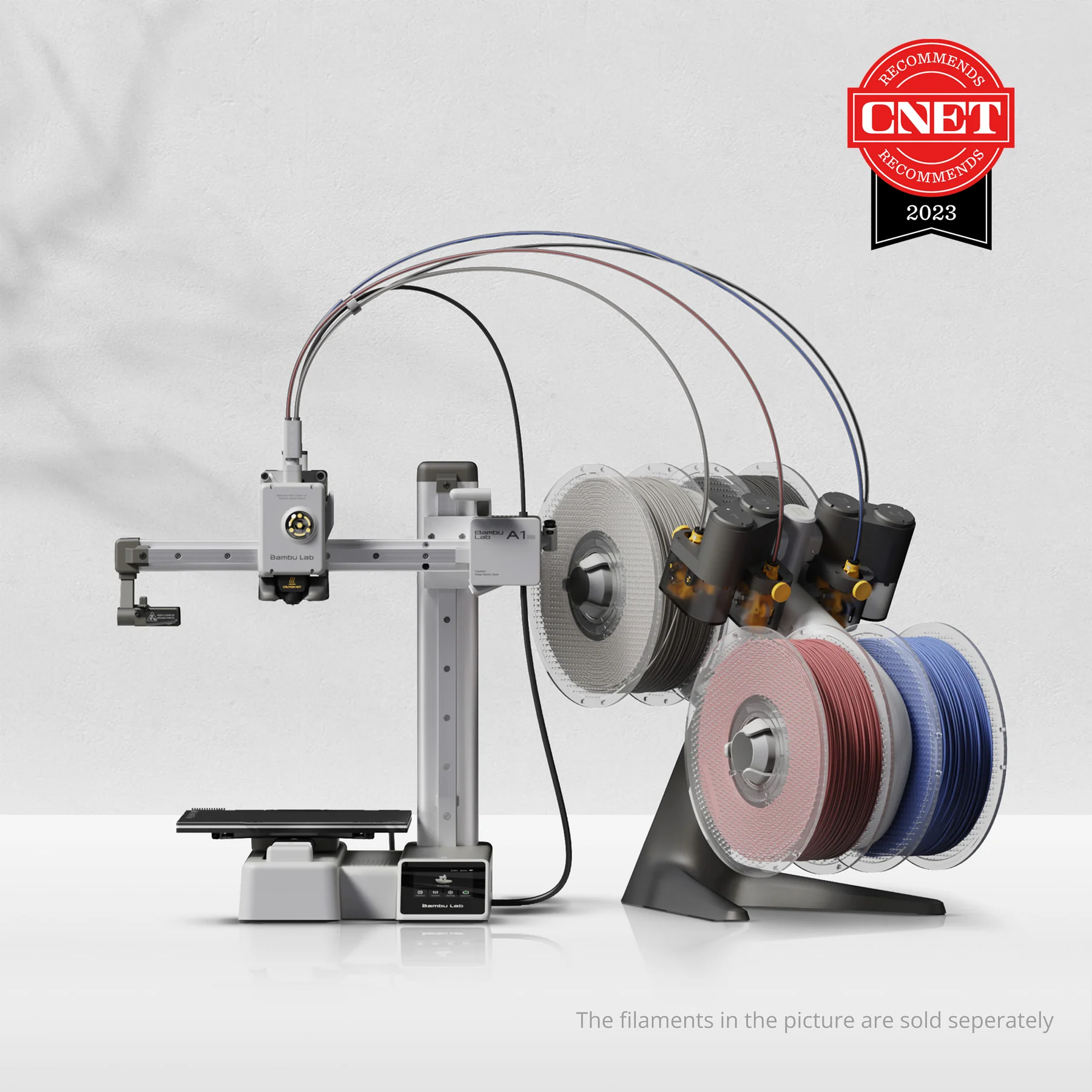Compare Photon M3 Plus vs A1 Mini
Comparison between the best 3D printers
Choose the best 3D printer at the best price. The cheapest 3D printers are here.
Buy a 3D printer here with 3D Fila.
 |
 |
|
| Model | Photon M3 Plus |
A1 Mini |
| Printing Material | Resin | Filament |
| Buy Resin for Anycubic Photon M3 Plus | Buy Filament forBambu Lab A1 Mini | |
| Estimated price | $430,00 | $549,00 |
| Manufacturer | Anycubic | Bambu Lab |
| Release Year | 2022 | 2023 |
| Print Volume [mm] | 197x122x245 | 180x180x180 |
| Printer Size [mm] | 290x360x475 | 315x347x365 |
| Weight [kg] | 11 | 5,5 |
| Power Loss Recovery | NO | YES |
| Maximum Resolution [mm] | 0,01 | 0,1 |
| Processor | 32-bit Silenciosa | |
| Display | Display touchscreen 4,3'' | Touchscreen 2,4'' |
| Power Supply | 150 W | 150 W |
| Connectivity | USB / Wi-Fi | Wifi, Bambu bus, Cartão SD |
| Operating systems | Windows, Linux, Macbook | |
| Date of registration in the system | 2023-01-19 | 2024-04-10 |
| Release date | 2022 | 2023 |
| Extra features | The Photon M3 Plus printer stands out for its automatic resin filling system, capable of keeping the tank always full. It offers wireless connectivity and support for the Anycubic Cloud app, allowing remote control and monitoring, including with an optional camera. Its 34-micron resolution, provided by a 9.25-inch monochrome LCD screen, ensures high-precision prints. Printing speed is remarkable, with a layer curing in 1.5 seconds. Other features include a large build volume, laser-etched build plate, and compatibility with a wash and cure station. | The Bambu Lab A1 Mini stands out not only for its impressive speed and automatic calibration, but also for its multi-color printing capability thanks to AMS Lite. This innovative system makes multi-color printing easy, making it accessible to everyone. AMS Lite, specific to the A1 Mini, supports up to four different materials simultaneously, providing creative freedom without complications. With comprehensive sensors for energy monitoring and recovery, a camera for timelapses and Wi-Fi control, the A1 Mini and AMS Lite together offer an intuitive and advanced 3D printing experience, ideal for materials such as PLA, PETG and TPU, and designed for simplicity and fast maintenance with quick-change nozzles. |
| Support for multiple colors and materials (AMS and CFS) | NO | YES |
Notes * |
||
| Cost-benefit | 8 / 10 | 7 / 10 |
| Hardware | 2.8 / 10 | 4.8 / 10 |
| Tela | . | . |
| Print volume | 3 / 10 | 3 / 10 |
| Performance | 9 / 10 | 4 / 10 |
Conclusion |
| In comparing the Photon M3 Plus and the Bambu Lab A1 Mini, both 3D printers present distinct advantages that cater to different user needs and priorities. The Photon M3 Plus excels in terms of print quality and precision, boasting a maximum resolution significantly finer than that of the A1 Mini. It also features a larger print volume and advanced capabilities such as an automatic resin filling system, making it ideal for users primarily focused on high-detail resin printing. Its streamlined connectivity options and robust build volume further enhance its appeal to those requiring precision in their 3D models. Conversely, the Bambu Lab A1 Mini is a formidable contender, particularly in versatility and user-friendliness. With its multi-color printing capabilities through the AMS Lite system and rapid calibration, it stands out as a great choice for users interested in experimenting with various materials and colors. Additionally, the A1 Mini's features like power loss recovery and comprehensive sensors position it as a more resilient option for everyday use, especially for novice users. When considering the cost and overall value, the Photon M3 Plus provides a higher score regarding performance relative to its price, while the A1 Mini balances its higher cost with multifaceted features that cater to creative exploration. Ultimately, the choice between the Photon M3 Plus and the Bambu Lab A1 Mini should be guided by specific printing needs. For highly detailed, intricate designs, the Photon M3 Plus is the superior choice. However, for versatility and ease of use, especially with multi-material printing, the Bambu Lab A1 Mini proves to be an excellent investment. Each printer represents a solid option in its category, so potential buyers should weigh their priorities against the unique strengths of each model. |

